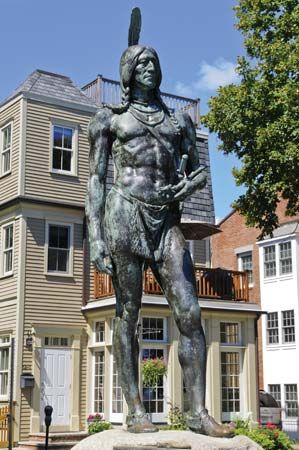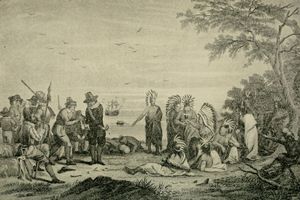Massasoit
Our editors will review what you’ve submitted and determine whether to revise the article.
- Born:
- c. 1590, near present Bristol, Rhode Island, U.S.
- Died:
- 1661, near Bristol
Massasoit (born c. 1590, near present Bristol, Rhode Island, U.S.—died 1661, near Bristol) was a Wampanoag Indian chief who throughout his life maintained peaceful relations with English settlers in the area of the Plymouth Colony, Massachusetts.
Massasoit was the grand sachem (intertribal chief) of all the Wampanoag Indians, who inhabited parts of present Massachusetts and Rhode Island, particularly the coastal regions. In March 1621—several months after the landing of the Mayflower at Plymouth—Massasoit journeyed to the colony with his colleague Samoset, who had already made friendly overtures to the Pilgrims there. Convinced of the value of a thriving trade with the newcomers, Massasoit set out to ensure peaceful accord between the races—a peace that lasted as long as he lived. In addition, he and his fellow Indians shared techniques of planting, fishing, and cooking that were essential to the settlers’ survival in the wilderness. When Massasoit became dangerously ill in the winter of 1623, he was nursed back to health by the grateful Pilgrims. The colonial leader, Governor Edward Winslow, was said to have traveled several miles through the snow to deliver nourishing broth to the chief.
Massasoit was able to keep the peace for many decades, but new waves of land-hungry Europeans created tension as the Indians’ native land was steadily taken over by the whites. When he died, goodwill gradually dissolved, culminating in the bloody King Philip’s War (1675), led by Massasoit’s second son.













